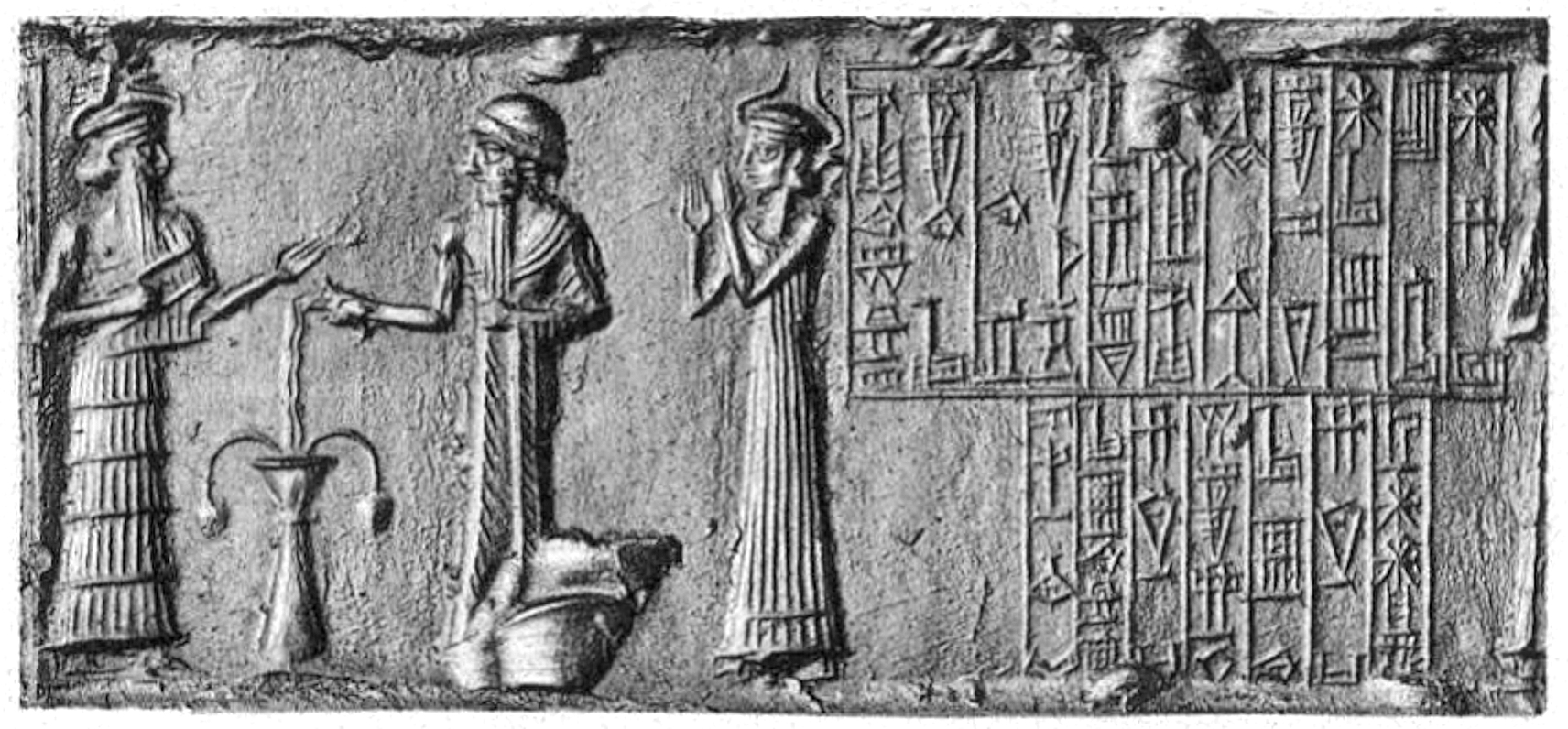|
Ĺ uqurtum
Ĺ uqurtum was a concubine of king Shulgi, second king of the Third Dynasty of Ur The Third Dynasty of Ur, also called the Neo-Sumerian Empire, refers to a 22nd to 21st century BC ( middle chronology) Sumerian ruling dynasty based in the city of Ur and a short-lived territorial-political state which some historians consider t .... Unlike several other royal women of the king, she is not well attested in the surviving archaeological record. She is mentioned on a stone vase found at Ur, where she a called ''his beloved concubine'' (''lukur'' is the word for ''concubine''). Shulgi appears on the vase too. Otherwise, her name appears in a few economical texts, providing evidence that funerary offerings were made after her death. References Literature * {{DEFAULTSORT:Suqurtum 21st-century BC people 21st-century BC women Third Dynasty of Ur ... [...More Info...] [...Related Items...] OR: [Wikipedia] [Google] [Baidu] |
Shulgi
Shulgi ( dŠulgi, formerly read as Dungi) of Ur was the second king of the Third Dynasty of Ur. He reigned for 48 years, from c. 2094 – c. 2046 BC (Middle Chronology) or possibly c. 2030 – 1982 BC ( Short Chronology). His accomplishments include the completion of construction of the Great Ziggurat of Ur, begun by his father Ur-Nammu. On his inscriptions, he took the titles "King of Ur", "King of Sumer and Akkad" and " King of the four corners of the universe". He used the symbol for divinity ( ) before his name, marking his apotheosis, from the 23rd year of his reign. Life and work Shulgi was the son of Ur-Nammu king of Ur – according to one later text (CM 48), by a daughter of the former king Utu-hengal of Uruk – and was a member of the Third dynasty of Ur. Year-names are known for all 48 years of his reign, providing a fairly complete contemporary view of the highlights of his career. Shulgi is best known for his extensive revision of the scribal school's curr ... [...More Info...] [...Related Items...] OR: [Wikipedia] [Google] [Baidu] |
Third Dynasty Of Ur
The Third Dynasty of Ur, also called the Neo-Sumerian Empire, refers to a 22nd to 21st century Common Era, BC (middle chronology) Sumerian ruling dynasty based in the city of Ur and a short-lived territorial-political state which some historians consider to have been a nascent empire. The Third Dynasty of Ur is commonly abbreviated as Ur III by historians studying the period. It is numbered in reference to previous dynasties, such as the First Dynasty of Ur (26-25th century BC), but it seems the once supposed Second Dynasty of Ur was never recorded. The Third Dynasty of Ur was the last Sumerian dynasty which came to preeminent power in Mesopotamia. It began after several centuries of control by Akkadian Empire, Akkadian and Gutian dynasty of Sumer, Gutian kings. It controlled the cities of Isin, Larsa, and Eshnunna and extended as far north as Upper Mesopotamia. History The Third Dynasty of Ur arose some time after the fall of the Akkadian Empire, Akkad Dynasty. The period betwe ... [...More Info...] [...Related Items...] OR: [Wikipedia] [Google] [Baidu] |
21st-century BC People
The 1st century was the century spanning AD 1 ( I) through AD 100 ( C) according to the Julian calendar. It is often written as the or to distinguish it from the 1st century BC (or BCE) which preceded it. The 1st century is considered part of the Classical era, epoch, or historical period. The 1st century also saw the appearance of Christianity. During this period, Europe, North Africa and the Near East fell under increasing domination by the Roman Empire, which continued expanding, most notably conquering Britain under the emperor Claudius (AD 43). The reforms introduced by Augustus during his long reign stabilized the empire after the turmoil of the previous century's civil wars. Later in the century the Julio-Claudian dynasty, which had been founded by Augustus, came to an end with the suicide of Nero in AD 68. There followed the famous Year of Four Emperors, a brief period of civil war and instability, which was finally brought to an end by Vespasian, ninth Roman emperor, a ... [...More Info...] [...Related Items...] OR: [Wikipedia] [Google] [Baidu] |
21st-century BC Women
The 1st century was the century spanning AD 1 ( I) through AD 100 ( C) according to the Julian calendar. It is often written as the or to distinguish it from the 1st century BC (or BCE) which preceded it. The 1st century is considered part of the Classical era, epoch, or historical period. The 1st century also saw the appearance of Christianity. During this period, Europe, North Africa and the Near East fell under increasing domination by the Roman Empire, which continued expanding, most notably conquering Britain under the emperor Claudius ( AD 43). The reforms introduced by Augustus during his long reign stabilized the empire after the turmoil of the previous century's civil wars. Later in the century the Julio-Claudian dynasty, which had been founded by Augustus, came to an end with the suicide of Nero in AD 68. There followed the famous Year of Four Emperors, a brief period of civil war and instability, which was finally brought to an end by Vespasian, ninth Roman ... [...More Info...] [...Related Items...] OR: [Wikipedia] [Google] [Baidu] |

.jpg)

